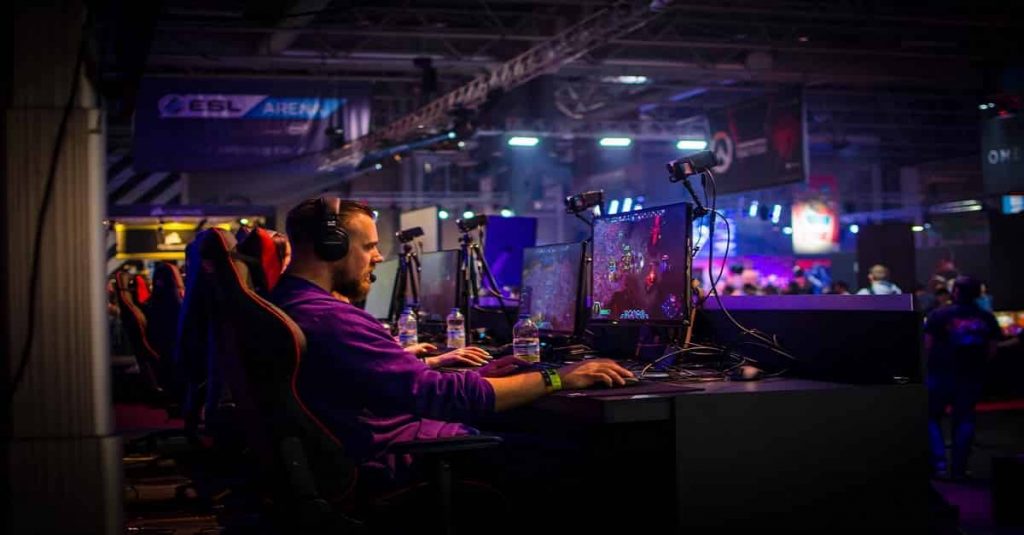Download Yesmovies Apk
Click the button below to start downloading the apk
YesMovies APK is a simple way to enjoy movies and shows on your phone. Just download the Yesmovies APK, install it, and open the app. Browse through a wide range of movies and TV series, pick what you like, and start watching. YesMovies Apk is user-friendly, and you can find various genres to suit your taste.
Yesmovies Apk Download
Downloading YesMovies APK is simple! Grab the Yesmovies APK file, install it on your device, and open the app. Now, enjoy a wide range of movies and TV shows on your phone. YesMovies provides an easy-to-use interface with various genres to explore, from action to comedy and drama.
Yesmovies App Download for PC
Getting YesMovies Apk on your PC is a piece of cake! First, Download the YesMovies app. Once the file is downloaded, install an Android emulator like Bluestacks on your PC. Open the emulator, locate the YesMovies APK file, and install it. Now, you’re all set to enjoy a vast collection of movies and TV shows right on your PC. YesMovies app for PC brings entertainment to your fingertips with just a few simple steps!

Different Yesmovies Websites
YesMovies is a popular online streaming platform available on various domains like yesmovies.to, yesmovies.2, yesmovies.com, yesmovies.app, yesmovies.at, yesmovies.mn, and yesmovies.net. These sites offer a wide range of movies and TV shows for free streaming. Users can easily navigate through different genres, select their favorite movies, and enjoy them without the need for a subscription.
Yesmovies Video Downloader
In the world full of entertainment and fun, being able to download videos from yesmovies apk and website is super cool! It means you can watch your favorite videos even when you’re not connected to the internet.
Steps to Download Videos from Yesmovies Apk
Step 1: Choose a Best Video Downloader: Pick a video downloader that lots of people like. Some good ones are 4K Video Downloader, YTD Video Downloader, and ClipGrab. Ask a grown-up to help you find and install it from a safe website.
Step 2: Install the Video Downloader: Follow the instructions to install the video downloader on your computer. Make sure to get help from a grown-up to keep things safe.
Step 3: Copy the Video’s Address: Go to the Yesmovies official website where the video is. Copy the video’s address by right-clicking on it and choosing “Copy” or using shortcuts (Ctrl+C on Windows or Command+C on Mac).
Step 4: Open the Video Downloader: Find the video downloader icon on your computer and open it. It looks like a special tool with buttons to help you save videos.
Step 5: Paste the Video’s Address: Paste the video’s address into the video downloader. You can do this by right-clicking and choosing “Paste” or using shortcuts (Ctrl+V on Windows or Command+V on Mac).
Step 6: Choose How You Want the Video: Pick how clear you want the video to be and what type of file it should be. You might see options like 720p or 1080p for clarity and MP4 or MKV for the file type. Choose what works best for you.
Step 7: Start the Download: Click the button that says “Download” or “Start” to begin saving the video. You’ll see a progress bar showing how much of the video is downloading.
Step 8: Watch the Progress: Keep an eye on the progress bar. Once it’s full, your video is ready!
Step 9: Find Your Video: Go to the folder where the video downloader keeps your saved videos. Now you can watch your video whenever you want, even without the internet.
Saving videos with a video downloader is like having a superpower! Now you can build your own collection of awesome videos and watch them anytime. Enjoy exploring the world of video downloaders and make your online experience even more fun!

Why to use Yesmovies Apk
YesMovies APK brings a world of entertainment to your fingertips, allowing you to stream and enjoy a diverse range of movies and TV shows. Here are 10 benefits of using the YesMovies APK for your entertainment needs:
- Vast Content Library:
- YesMovies APK provides access to a vast and diverse library of movies and TV shows, spanning various genres. From classic films to the latest releases, there’s something for every taste.
- User-Friendly Interface:
- The Yesmovies APK features a user-friendly interface, making it easy for users of all ages to navigate and explore the extensive content catalog effortlessly.
- Free Streaming:
- One of the significant benefits is that YesMovies APK allows free streaming of movies and TV shows. Users can enjoy high-quality content without the need for subscription fees.
- Offline Viewing:
- YesMovies APK often includes the option to download content for offline viewing. This feature is particularly handy for users who want to watch movies without an internet connection.
- Regular Updates:
- The Yesmovies APK is frequently updated with the latest movies and TV episodes, ensuring that users have access to fresh content regularly.
- Multiple Resolutions:
- YesMovies APK usually offers content in various resolutions, allowing users to choose the video quality that suits their internet connection and device capabilities.
- Cross-Platform Compatibility:
- YesMovies APK is designed to work across multiple platforms, including Android devices, making it accessible to a wide range of users.
- No Account Required:
- Unlike some streaming services that require user accounts, YesMovies APK often allows users to start streaming without the need for sign-ups or logins.
- Search and Filter Options:
- The Yesmovies APK typically includes search and filter options, making it easy for users to find specific movies or explore content based on genres, release years, and more.
- Community Recommendations:
- Some versions of YesMovies APK may have community features, allowing users to rate and recommend movies. This social aspect enhances the overall user experience.
Best Movies to Watch on Yesmovies Apk
YesMovies Apk is a treasure trove of entertainment, offering a wide variety of movies and content for viewers of all interests. From epic adventures to high school dramas, the platform caters to diverse tastes. Let’s take a closer look at some intriguing movies available on YesMovies and explore the possibilities.
YesMovies Movie Selection:
- YesMovie Legends:
- Dive into the world of legendary tales and epic adventures with “YesMovie Legends.” This movie promises a journey filled with excitement and mythical wonders.
- YesMovie Epic:
- For those seeking grand tales and larger-than-life experiences, “YesMovie Epic” is sure to deliver an epic cinematic journey.
- YesMovie The Campaign:
- Explore the realm of politics and humor with “YesMovie The Campaign.” This movie promises a mix of satire and entertainment as characters navigate the twists and turns of a political race.
- YesMovies Significant Other:
- Relationships take center stage in “YesMovies Significant Other,” offering a heartfelt exploration of connections and emotions.
- YesMovies High School:
- Take a trip down memory lane with “YesMovies High School,” a movie that captures the essence of teenage life, friendships, and adventures.
- YesMovies Industry:
- Delve into the fascinating world of industries and business with “YesMovies Industry,” a movie that combines drama and intrigue.
- YesMovie The Peripheral:
- Uncover the mysteries beyond the ordinary with “YesMovie The Peripheral,” a film that promises to push the boundaries of imagination.
- YesMovie Bright:
- Immerse yourself in a world where fantasy meets reality with “YesMovie Bright,” a movie filled with magic, creatures, and unexpected alliances.
- YesMovies The Challenge:
- Embark on a thrilling journey of challenges and triumphs with “YesMovies The Challenge,” a film that showcases the power of resilience.
- YesMovies Becoming You:
- Explore personal growth and self-discovery with “YesMovies Becoming You,” a movie that highlights the transformative journey of individuals.
- YesMovie Life of the Party:
- Join the laughter and joy in “YesMovie Life of the Party,” a movie that promises comedic moments and feel-good vibes.
- YesMovies Get a Life:
- Experience the journey of self-discovery and personal growth with “YesMovies Get a Life,” a film that encourages viewers to embrace new adventures.
- YesMovies The In Between:
- Delve into the mysterious and supernatural with “YesMovies The In Between,” a movie that blurs the lines between reality and the unknown.
- YesMovie All the Money in the World:
- Witness the drama and intrigue of wealth and power in “YesMovie All the Money in the World,” a gripping tale of ambition and consequences.
- YesMovie Back in the Game:
- Rediscover the thrill of competition and redemption with “YesMovie Back in the Game,” a sports-centric movie that inspires resilience.
- YesMovie Rim of the World:
- Embark on an adventurous journey with “YesMovie Rim of the World,” a film that combines elements of friendship and extraterrestrial encounters.
- YesMovie Good Rivals:
- Dive into the world of friendly competition and camaraderie with “YesMovie Good Rivals,” a movie that celebrates healthy rivalry.
- YesMovies The Last of Us:
- Experience a gripping tale of survival and humanity in “YesMovies The Last of Us,” a film that explores the depths of post-apocalyptic storytelling

Yesmovies Apk Alternatives
- Fmovies Apk:
- Known for its user-friendly interface, Fmovies apk offers a vast library of movies and TV shows. The app is available for Android users and allows for easy navigation and streaming of high-quality content.
- 123movies Apk:
- 123movies Apk is a popular app that provides a seamless streaming experience. It offers a vast selection of movies and TV series and supports multiple platforms, including Android, iOS, Windows, and more.
- Filmy4wap:
- Filmy4wap is a feature-rich app that allows users to stream and download movies and TV shows in high definition. Its user-friendly interface and regular updates make it a favorite among movie enthusiasts.
- Cineb:
- Cineb is a versatile streaming platform that aggregates content from various sources, making it a one-stop destination for movies, TV shows, and live television. It supports multiple platforms, including Android, iOS, Windows, and macOS.
- Lookmovie:
- Lookmovie offers a vast collection of movies and TV series, featuring a user-friendly interface and the option to download content for offline viewing. It is compatible with Android devices and provides regular updates for an enhanced streaming experience.
- MovieBox Pro:
- MovieBox Pro is a streaming app that offers a wide range of movies and TV shows. It boasts a clean interface, regular updates, and supports multiple platforms, making it a suitable alternative for YesMovies APK.
- Crunchyroll Apk:
- Crunchyroll is a user-friendly app that provides a comprehensive library of anime movies and TV shows. It supports Android devices and offers features like subtitles, external video player support, and more.
- Onionplay:
- Onionplay is a popular streaming app that features a user-friendly interface and a vast collection of movies and TV series. It supports multiple platforms, including Android, iOS, and Windows.
What is a YesMovies Proxy?
A YesMovies proxy acts like a bridge, helping you reach the YesMovies website even if it’s blocked in your region. Think of it as a secret passage that allows you to enjoy your favorite movies without any hassle.
How to Use a YesMovies Proxy:
Using a YesMovies proxy is as easy as 1-2-3! Follow these simple steps:
- Find a Reliable Proxy:
- Search online for a YesMovies proxy. There are many available, so choose one that is reliable and well-known.
- Enter the Proxy URL:
- Once you’ve chosen a proxy, enter its URL in your web browser. It’s like typing in the address of a secret doorway to YesMovies.
- Enjoy YesMovies Content:
- Voila! You’re now on YesMovies using the proxy. Browse through the vast collection of movies and TV shows and start streaming.
Why Use a YesMovies Proxy?
- Bypass Restrictions:
- If YesMovies is blocked in your area, a proxy helps you bypass these restrictions, giving you seamless access to the content.
- Privacy Protection:
- Proxies also provide a layer of privacy, as your online activity is routed through a different server, keeping your identity secure.
- Uninterrupted Entertainment:
- With a YesMovies proxy, you can enjoy uninterrupted entertainment, ensuring you never miss out on the latest movies or TV episodes.
YesMovies Unblock Pro:
YesMovies Unblock Pro is a tool designed to bypass regional restrictions and unblock access to the YesMovies platform. It acts as a workaround, allowing users to enjoy the extensive library of movies and TV shows without geographical limitations.
How to Use YesMovies Unblock Pro:
- Search for YesMovies Unblock Pro:
- Look for YesMovies Unblock Pro online. Ensure that you choose a reliable and trustworthy source to download or access the tool.
- Download and Install:
- Download the YesMovies Unblock Pro tool and follow the installation instructions. Make sure to obtain the tool from a reputable source to avoid security risks.
- Launch the Unblock Pro Tool:
- Once installed, launch the YesMovies Unblock Pro tool. The interface is designed to be user-friendly, ensuring a straightforward experience for users.
- Connect to the Unblock Pro Server:
- Within the tool, select a server from the available options. The Unblock Pro tool will act as an intermediary, routing your connection through a server in a region where YesMovies is accessible.
- Access YesMovies:
- With the Unblock Pro tool connected to a suitable server, visit the YesMovies website. You should now have unrestricted access to the platform, allowing you to stream movies and TV shows hassle-free.
About PC Gaming
The realm of PC gaming has undergone a remarkable transformation over the past decade, evolving from a niche interest into a multi-billion-dollar industry that captivates millions of gamers worldwide. This article explores the current state of the PC gaming landscape, highlighting its unprecedented growth, notable trends, and the driving forces behind its enduring success.
The Growth of the PC Gaming Industry
The PC gaming industry has witnessed exponential growth, and several factors have contributed to this surge. Digital distribution platforms like Steam, Epic Games Store, and GOG have made it easier than ever for gamers to access a vast library of titles, ranging from indie gems to blockbuster releases. The COVID-19 pandemic further accelerated this growth, with gaming serving as a source of entertainment and social interaction during lockdowns.
Esports, the competitive facet of video gaming, has played a pivotal role in expanding the industry’s horizons. Esports events now rival traditional sports in viewership, offering substantial opportunities for professional gamers. Titles like League of Legends, Dota 2, and Counter-Strike: Global Offensive have become household names, attracting players and organizations competing for millions in prize money.
Hardware Innovation and Accessibility
Innovation in gaming hardware has been a cornerstone of the industry’s success. Graphics cards, CPUs, and peripherals have become more potent and affordable, enabling gamers to immerse themselves in breathtaking visuals and immersive gameplay experiences. The introduction of ray tracing technology and high-refresh-rate monitors has raised the bar for graphical fidelity and fluidity.
Cloud gaming services, such as NVIDIA GeForce Now and Google Stadia, have ushered in a new era of accessibility. Gamers no longer require top-of-the-line hardware to enjoy cutting-edge titles; instead, they can stream games from remote servers with minimal latency. This technology promises to make the industry more inclusive, bridging the gap between casual and hardcore gamers.
Diversity and Inclusivity
The PC gaming industry has made commendable strides towards diversity and inclusivity. Game developers increasingly recognize the importance of representation and inclusivity in their creations. Titles like “The Last of Us Part II,” “Hades,” and “Celeste” have garnered acclaim for their diverse characters and thought-provoking narratives.
Addressing issues of toxicity and harassment within gaming communities is also a top priority. Companies are implementing stricter moderation policies and promoting positive gaming experiences. Initiatives like the “Gamers for Good” campaign and organizations like AnyKey are working tirelessly to foster safer and more inclusive gaming environments for all.

Indie Renaissance
Indie game development has thrived, with smaller studios producing innovative and unique experiences that challenge conventions. Games like “Hollow Knight,” “Stardew Valley,” and “Undertale” have captured the hearts of players worldwide, proving that a smaller budget doesn’t equate to sacrificing quality or creativity.
Crowdfunding platforms like Kickstarter and Fig have empowered indie developers to bring their visions to life. This resurgence has revitalized old-school genres, including point-and-click adventures, platformers, and classic role-playing games (CRPGs), catering to gamers’ nostalgia while delivering fresh and captivating gameplay experiences.
Conclusion
The PC gaming industry has evolved significantly from its humble beginnings and shows no signs of slowing down. The synergy of hardware innovation, accessibility, diversity, and a flourishing indie scene has cultivated a dynamic ecosystem that continues to attract newcomers and engage long-time enthusiasts. As technology advances and the industry embraces inclusivity, the future of PC gaming shines brighter than ever, promising even more thrilling developments for gamers to savor.